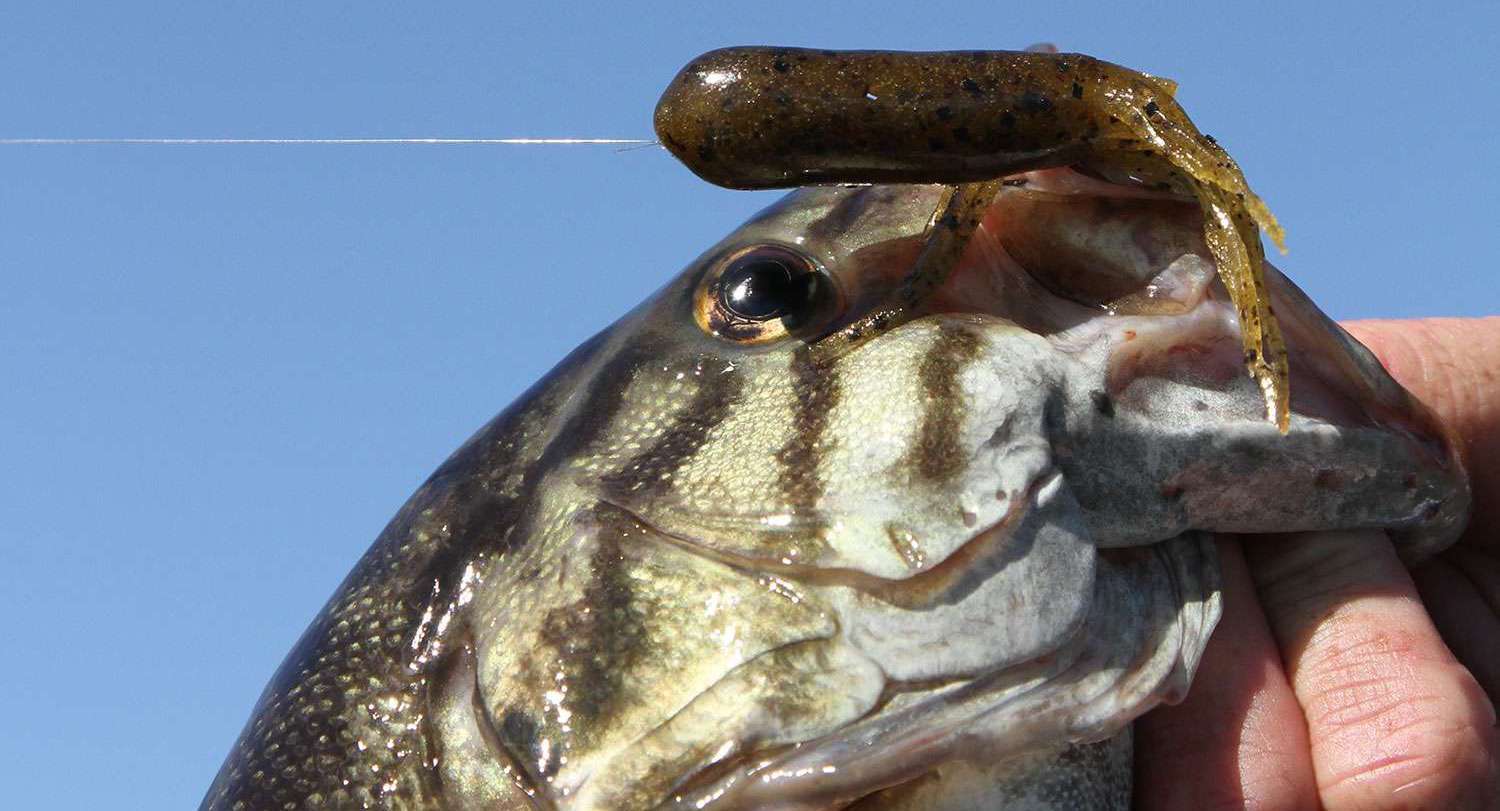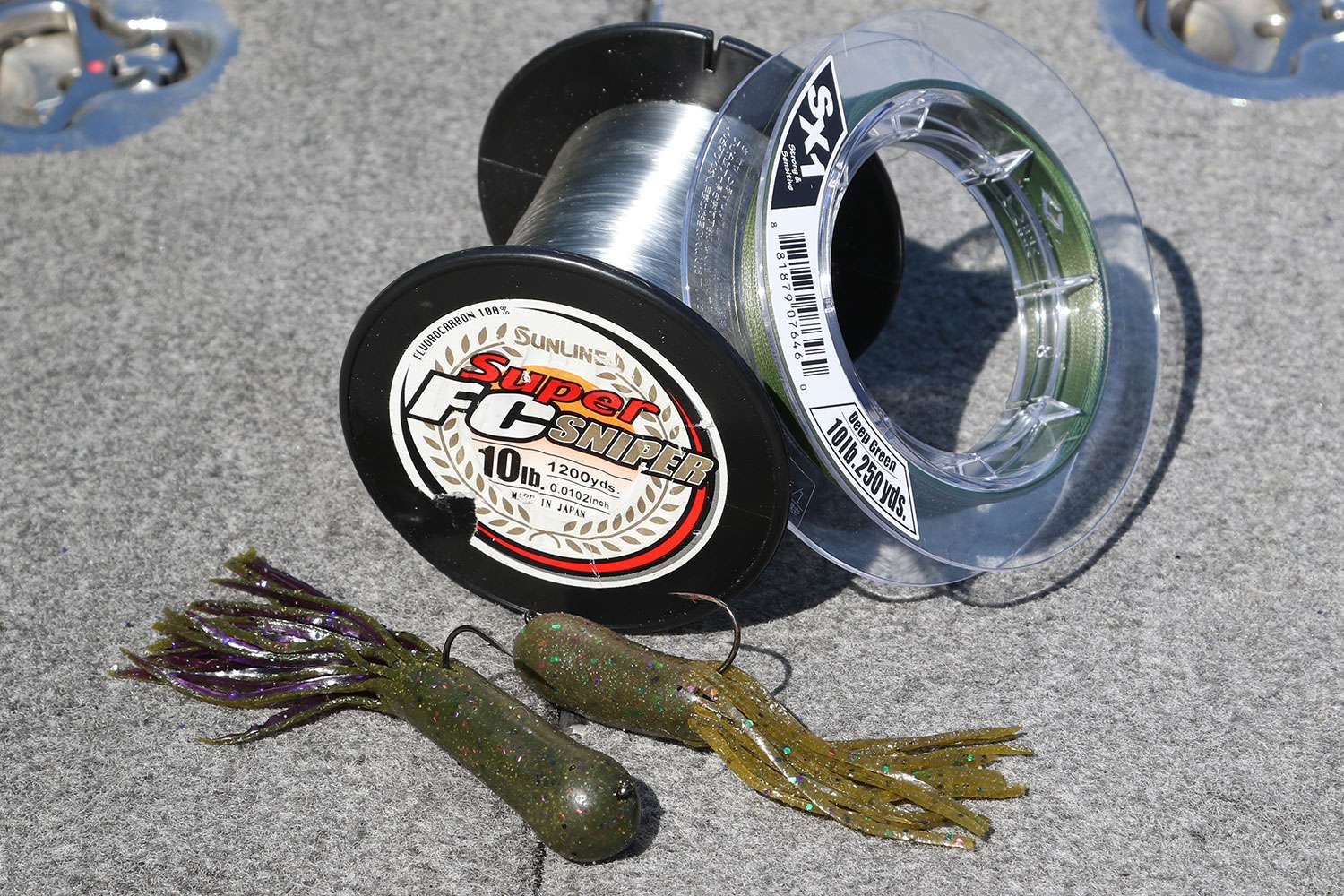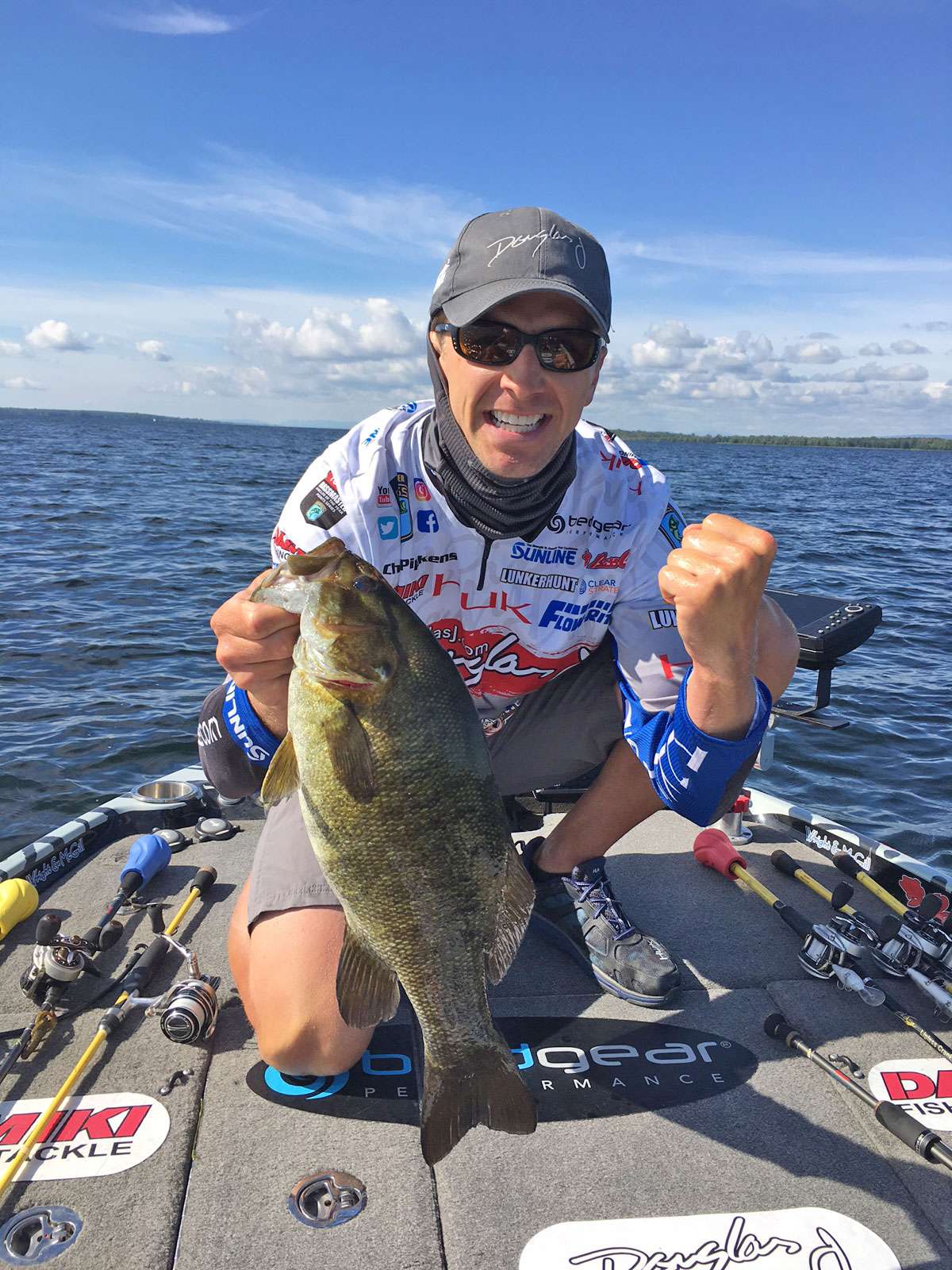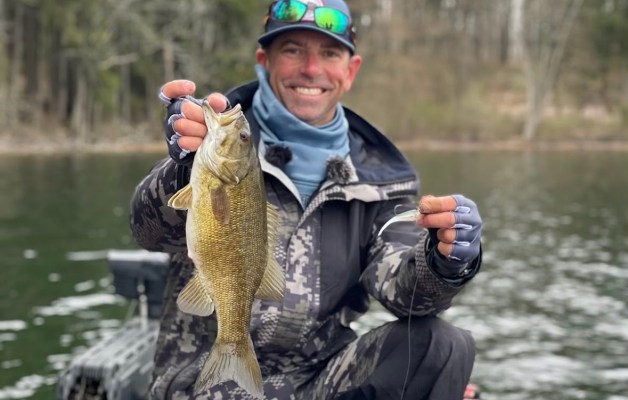
For a young guy, Chad Pipkens has great respect for the old ways, especially when it comes to tubes. Kind of a throwback deal that has yielded much of its popularity to drop shots and maybe even the Ned rig, tubing still merits consideration.
“It’s kind of an art that’s been left behind, but it’s a good small profile that represents crawfish, sunfish, perch and other forage,” the Michigan pro said. “And don’t think this is just for smallmouth; you can catch some good largemouth on this bait too.”
We recently quizzed Pipkens on his tube tactics. Here’s what he shared.

Play the Angles
While old-school Texas rigging may occasionally find its way into the mix, Pipkens is all about the open hook. With this more mainstream arrangement, snapping the tube in an out of grass or dragging it over rock is his deal.
Given his preferred applications, he’s going to reach for a tube jighead with a 60-degree line tie every time. A 90-degree model has its place in the vertical drop and hop routine, but if he’s video gaming, Pipkens more commonly uses a drop shot.
“I feel like a 60-degree head comes through stuff better — especially if you’re dragging it,” he said. “I feel like the 90 catches more (on cover).”
The angle, Pipkens says, also plays a key role at the moment of truth.
“When you’re setting the hook with the 60-degree tie, it’s more direct — you’re pulling through the hook,” he said. “By comparison, when the 90-degree (jighead) is pointing up, it doesn’t pull the same way. It doesn’t pull up into the fish’s mouth.
“That may be mental, but fishing is 90 percent mental; so, if you think it’s giving you a better hook-up percentage, you have to do what you think is best.”

Size (And Shape) Matters
Look in Pipkens’ tube box and you’ll see two distinctly different jighead styles: the slender, elongated model and the broader, stumpy “fat heads.” The former’s best for shallower scenarios, while the latter does a better job of punching through the water column. For most of his deep-water work, Pipkens goes with a 3/8-ounce fat head.
“If I’m fishing Lake Erie, the St. Lawrence River, Lake Champlain; if I’m in deep water with rocky bottom, that’s the head I want to use,” he said. “Also, any time I’m dragging current seams in any of the rivers where I need to keep it down, that fat head makes your tube fall straight vertically. It doesn’t flutter in the current.
“If you have a lighter tube with a slender head, it’s going to get (caught) in the current, it’s going to float under things and you’re going to get hung up more. Whereas, if you can keep bottom contact with that fat head tube, you’re going to lose fewer jigs, and you’re going to keep your bait in the strike zone more.”
Now, getting back to the slender design, Pipkens employs a 3/16- to 1/4-ounce tube head around shallower grass. He’ll judge his size based on wind levels, but the basic deal here is the slower, more vulnerable presentation.
“In places like St. Clair and Champlain where the fish suspend around grass, you want that flutter to entice the strikes,” he said. “You want that bait to spin around once in a while. You want it to slide to the left, slide to the right and do something different.
“When you snap it out of the grass, it has a nice slow fall and it will stay where those fish are suspended. A lot of times, your bites come on the initial fall because it draws their attention. You can recreate that throughout your cast by dragging it for five to 10 seconds, you give it a couple quick snaps to bring it up off the bottom and maybe it draws their attention.”

Enticing Action
With either head style, he stresses the need for angler control; particularly as it relates to boat motion. In low to moderate waves, the boat’s rise and fall imparts strategic action on a dead-sticked tube. Just don’t let it become unruly.
“If it’s really wavy and your bait’s moving up and down too much, you have to adjust with your rod,” he said. “Sometimes, you can adjust by pitching your bait farther out so your bait is less vertical. But the problem you run into is that if you’re fishing around snaggy cover, the more likely you’re going to get snagged.
“You want to keep the bait in your control, because if the boat is bouncing up and down 3 feet, that doesn’t look natural. But if you’re dragging it around and every now and then you dart it up, that looks natural because that’s what a goby does.”
Tackle Tips
Pipkens fishes his tubes on 12-pound Sunline SX braid with a 10-pound Sunline Sniper fluorocarbon leader. This setup facilitates long casts, minimizes visibility, repels harsh bottom interaction and allows for snappy hook sets.
“You gotta get the fish in the boat,” he said. “A tube is not like a drop shot where only the weight is in contact with the bottom; a tube is in direct contact with the bottom. If you’re fishing it around rocks there’s a good chance your line is rubbing on rocks, so you have to check your line often for frays.”
Despite the temptation of horsing big smallmouth on baitcasting gear, Pipkens only tubes with spinning gear. Essential, he said, is a softer rod.
“If you hook a big smallmouth with this big weight, something has to give,” he explains. “With a heavy rod, you’re going to tear their mouth. Also, they have bony mouths, so once I lay into him a couple times, I can back off and let that softer rod do the work and absorb the shock.
“That way, when they give you those big head shakes, the hook’s not going to fall free. We can’t use nets (on the Elite Series), so you might as well let them be tired when they get to the boat. Even if you’re using a net, it’s a lot easier to net a fish when he’s floating at the surface.”






